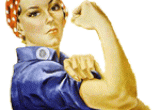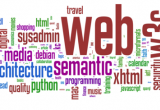In the first article for their new Digital Web Magazine column, "Web 2.0 Design: Bootstrapping the Social Web," Richard MacManus and Joshua Porter discuss the future of the web and its impact on design.
[The] Web 2.0 world...is not defined as much by place and is less about visual style. XML is the currency of choice in Web 2.0, so words and semantics are more important than presentation and layout. Content moves around and is accessible by programmatic means. In a very real sense, we’re now designing more for machines than for people.
They point to "RSS aggregators, search engines, portals, APIs...and Web services" as examples of interface tools that gather and remix information. And they state, "It matters very little what domain content comes from."
Web design in Web 2.0 is about building event-driven experiences, rather than sites...RSS feeds enable people to subscribe to your content and read it in an aggregator any time, sans extraneous design...
What does this mean for Web designers? It means designers have to start thinking about how to brand content as well as sites. It means designers have to get comfortable with Web services and think beyond presentation of place to APIs and syndication. In short, it means designers need to become more like programmers. Web 2.0 is a world of thin front ends and powerful back ends, to paraphrase Bezos.
I don't know about you, but my first react on reading this was Yikes! One of the things I like best about web design is the opportunity to present great content in a compelling and visually appealing way. I don't want to program amorphous data--I want to design content-rich, sensually pleasing, self-contained sites. Yes, places.
Am I out of luck in this new web? Should I hang up my hat before I've even grown used to wearing it?
After much thought I've finally decided that, while there is a lot of truth to what MacManus and Porter say, their enthusiasm for their subject has caused them to overreach on the prognostics a bit. Yes, applications that gather, reshuffle and redistribute content are here to stay. They serve a useful purpose in this increasingly information-overladen age. And as designers, we need to know how to best organize and serve up content to such web services.
But does this automatically sound the death toll for web sites--virtual places that people can retreat to and explore? I think, rather than supplanting web sites, the new technologies will be a welcome companion to them. Reading snippets of information in a feed aggregator will never replace the adventure of actually visiting a site, wandering its avenues and sifting through its contents. That would be like reading only book reviews and never the book. When I am in a hurry, yes. When I am choosing which sites to explore more fully, certainly. But the best sites offer more than just "data"; they are an experience all in themselves.
It's a mistake to say we're "designing more for machines than for people." Yes, we are designing for machines now, and it's an important aspect of design that we shouldn't neglect. And yes, we do need to separate content from style for this reason, as well as others. But we need to be cautious about putting too much emphasis on the "wonders" of new technologies. In the end we are still designing for people, and we always will be.


